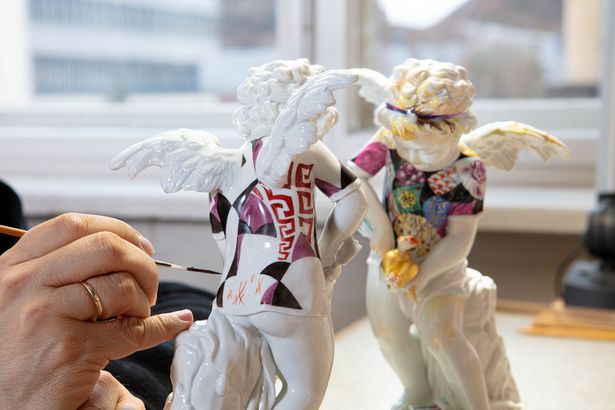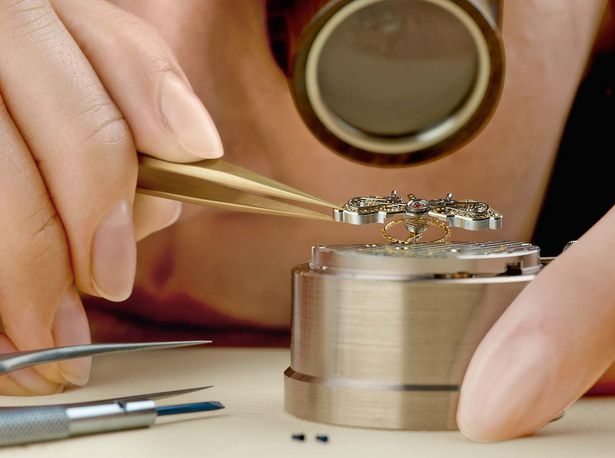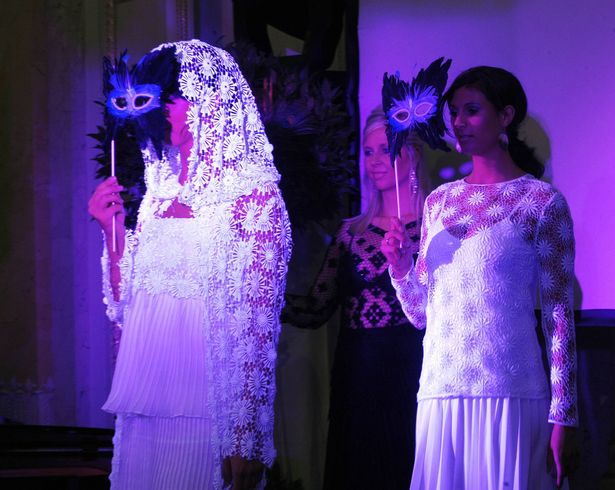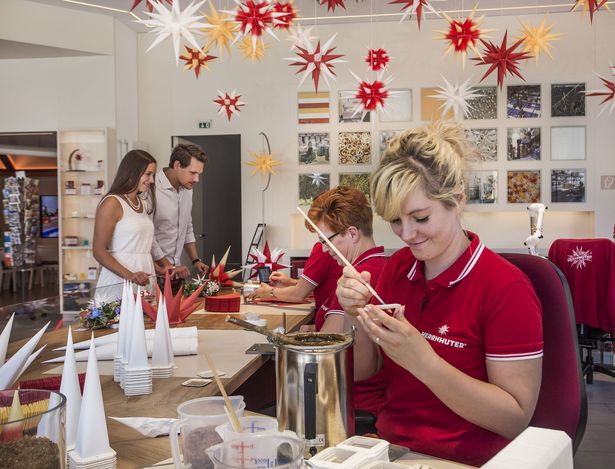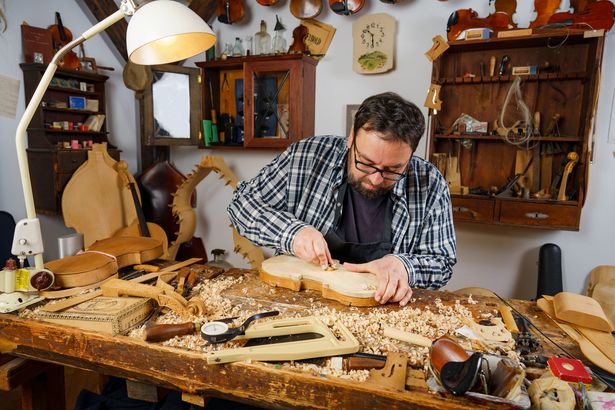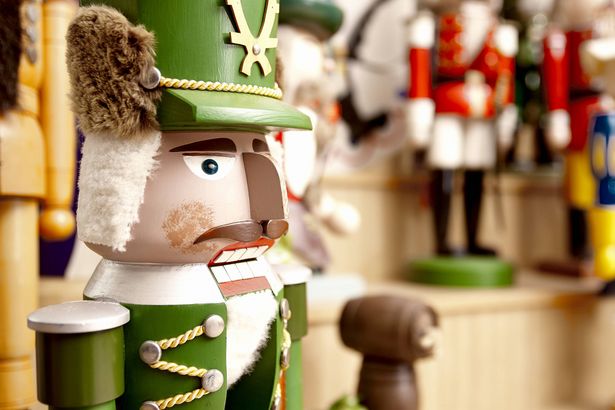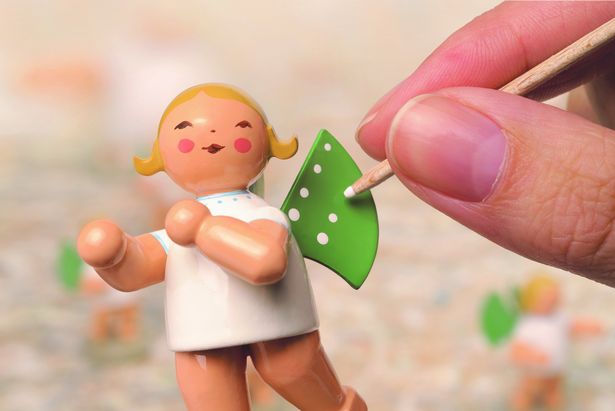Many rare and traditional crafts have their origins in Saxony. Highly valued and very much alive, they have been passed on by manufacturers from generation to generation and some of them have become famous around the world. Creative people with innovative ideas, skilled hands and a lot of passion are dedicated to preserving and continuing this unique cultural heritage. Let’s just say, you will be amazed when you look over the shoulders of these talented craftspeople!
Crafted by experts
Craftmanship at its best
„He who works with his hands, his head and his heart is an artist.”
Meissen: where dreams are made of porcelain
Anyone who likes fine china knows the crossed swords in cobalt blue as the famous trademark of Meissen porcelain. The world-famous Meissen factory, where porcelain has been manufactured since 1710, has become eponymous with high-quality craftsmanship. Meissen porcelain, the finest of materials, is turned into beautiful, stylish, and timeless designs that are collectors’ items and treasured keepsakes. By the way, the factory was founded by Augustus the Strong, Elector of Saxony, who was a keen porcelain collector himself.
Tip: Don’t miss Meissen’s on-site porcelain museum featuring 20,000 exhibits and, most importantly, there is also a show workshop for you to see how the precious items are being made by expert craftspeople.
Top German watchmaking in Glashütte
Question: Where are the best and most expensive watches in Germany made? Answer: in Glashütte! The small town around 18 miles south of Dresden is an iconic place when it comes to watchmaking. Exquisite timekeepers have been manufactured here since 1878 – with great care and outstanding attention to detail. The results are coveted all over the world: luxurious watches, individually designed and embodying Saxon values such as quality, precision, and reliability.
Tip: Visit the German Clocks and Watches Museum for a unique collection of pocket watches, wristwatches, and pendulum clocks through the centuries.
The art of lace in Plauen
In the 19th century, the ladies of the Vogtland region developed a special love for the art of embroidery and in 1900, lace from the small town of Plauen even won the coveted Grand Prix at the World Exhibition in Paris. Since then, there has been a busy lace making industry in Plauen, which, to this day, has remained the heart of the German embroidery industry, now also employing innovation technologies: In technical embroidery, for example, sensors are applied, and hoses are processed to make products for medical or automotive engineering.
Tip: When in Plauen, visity the "Thread Factory"
A (Christmas) star is born in Saxony
More than 160 years ago, a very special star was born in the small town of Herrnhut in eastern Saxony. Known as “Moravian Star”, or Herrnhuter Stern in German, it has a 25-point form, is made of paper and cardboard, and considered the origin of this particular type of Christmas decoration. Today, the stars are still made by hand and have become popular Christmas decorations in many places around the world. Recently the Moravian Church in Herrnhut has become a UNESCO World Heritage.
Tip: Join a workshop and try making a Moravian Star yourself!
Musical instrument making in the Vogtland region
Markneukirchen, Schöneck, Klingenthal – these are the three Vogtland towns that make up the so-called Musicon Valley where a wide range of wooden and brass musical instruments have been made for more than 350 years. By hand, of course. Nowhere in the world are there so many expert musical instrument makers in one place as in this corner of Saxony which is why the region is listed as an Intangible Cultural Heritage.
Tip: In Marktneukirchen’s Musical Instrument Museum you can marvel at the largest playable violin and two tiny violins that fit into a matchbox!
Wooden art from the Ore Mountains
Here's a nice bit of trivia for you: The world’s largest nutcracker is exactly 10.10 metres tall. Like so many other beautiful wooden toys, it comes from the Ore Mountains. Carving and woodturning have a long tradition here. When the traditional mining industry in the Ore Mountains declined, many miners turned to the artistic processing of wood. Results are the typical Ore Mountains folk art figures and objects such as angels, miners, candle arches, smoking men or the nutcracker. The "Boys from the Wood" outfit continues this tradition with a modern spin, lovingly handcrafting rock and football stars or surfers and skiers as incense burners.
And just in case you’ve ever come across little wooden angels with eleven white dots on their green wings: Those are expertly handcrafted by Wendt & Kühn in Grünhainichen, one of the Ore Mountain’s most famous producers, and the cute figures are not only popular decorations for Christmas, but much loved by friends of intricated wooden art around the world at any time of the year.
The mentioned woodturning is a rare craft, turning wooden hoops into small animals. One workshop in the so-called “toy village” of Seiffen is the only place where this technique is still being mastered.
Tip: Don’t miss the world’s largest nutcracker at Europe’s first nutcracker museum in Neuhausen.

